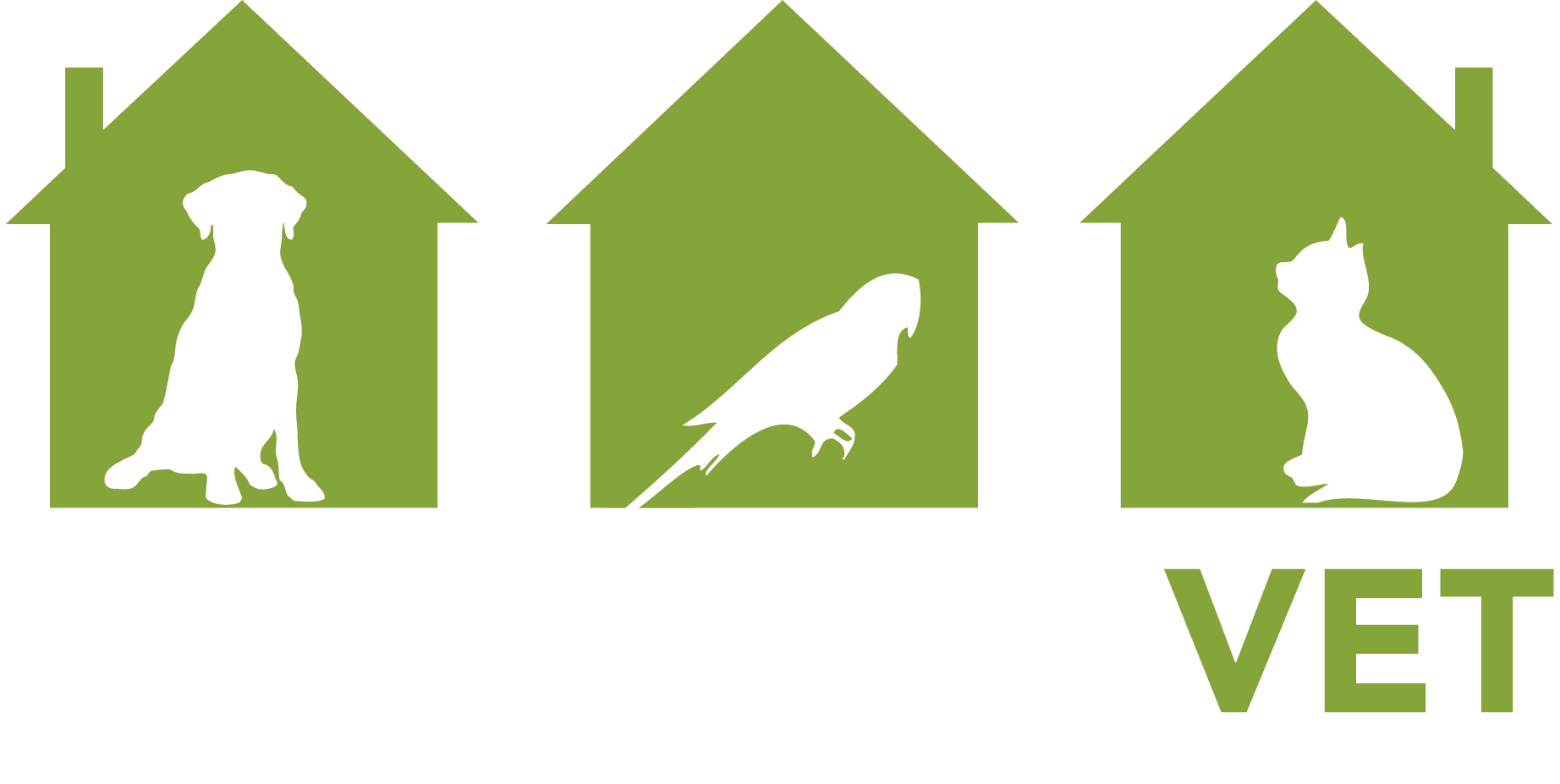When it comes to our pets’ well-being, we often focus on their wagging tails, playful antics, and unconditional love. But lurking beneath those adorable smiles lies a hidden danger that can jeopardize their overall health – gum disease. Just like humans, dental issues and gum disease is a common issue faced by pets young and old.
At The House Call Vet, we know how passionate we are about our pets. In this post, we will outline what you need to know about gum disease in pets, shedding light on its causes, symptoms, prevention and various treatment options.
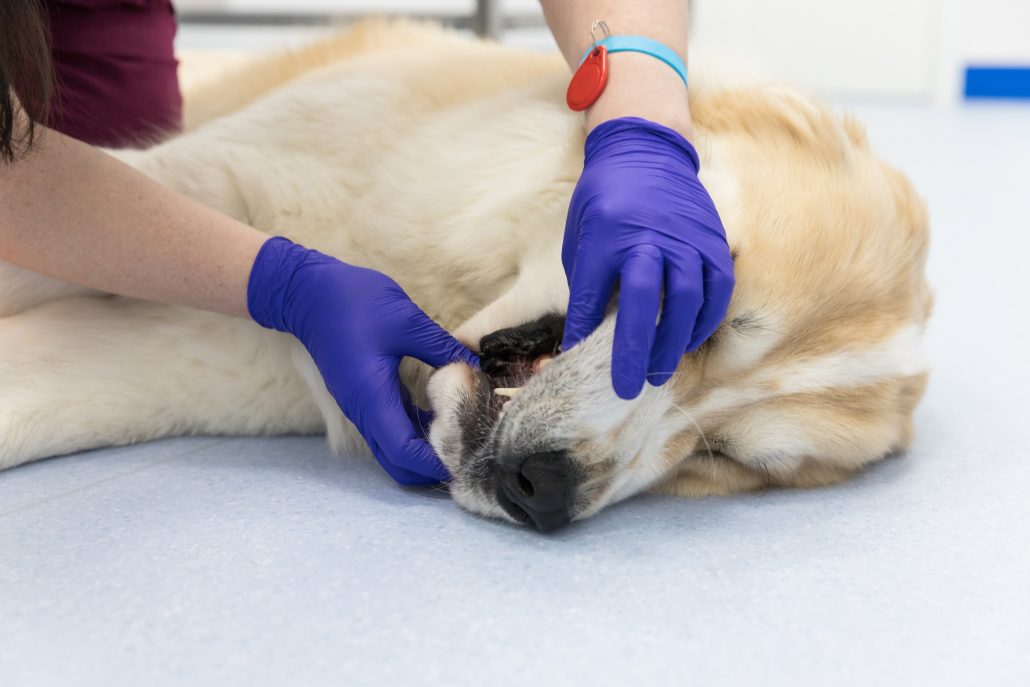
Understanding Dental Disease
Periodontal disease, known as gum disease, is a progressive condition that wreaks havoc on the oral health of our beloved pets. Caused by bacterial activity in the mouth, this disease silently attacks the gums, bones, and supporting structures of their teeth.
The true challenge of gum disease lies in its hidden nature, as visible signs of gum disease in our beloved furry companions often remain hidden until the disease reaches an advanced stage. Factors such as inadequate dental hygiene, genetic predisposition, trauma, malocclusion, and even the breed of your pet can amplify their susceptibility to periodontal disease.
What Causes Dental Disease?
Dental disease in pets stems from a combination of factors, primarily involving the buildup of bacteria and food particles along the gum line. When left unattended, these remnants form a sticky film called plaque. Without regular brushing to remove this plaque, it hardens into tartar, leading to a range of problems such as inflammation and discomfort. Overtime, this extends deeper into the surrounding gums, compromising the support system for the teeth.
Read More: How To Tell You Are Ready For A Pet
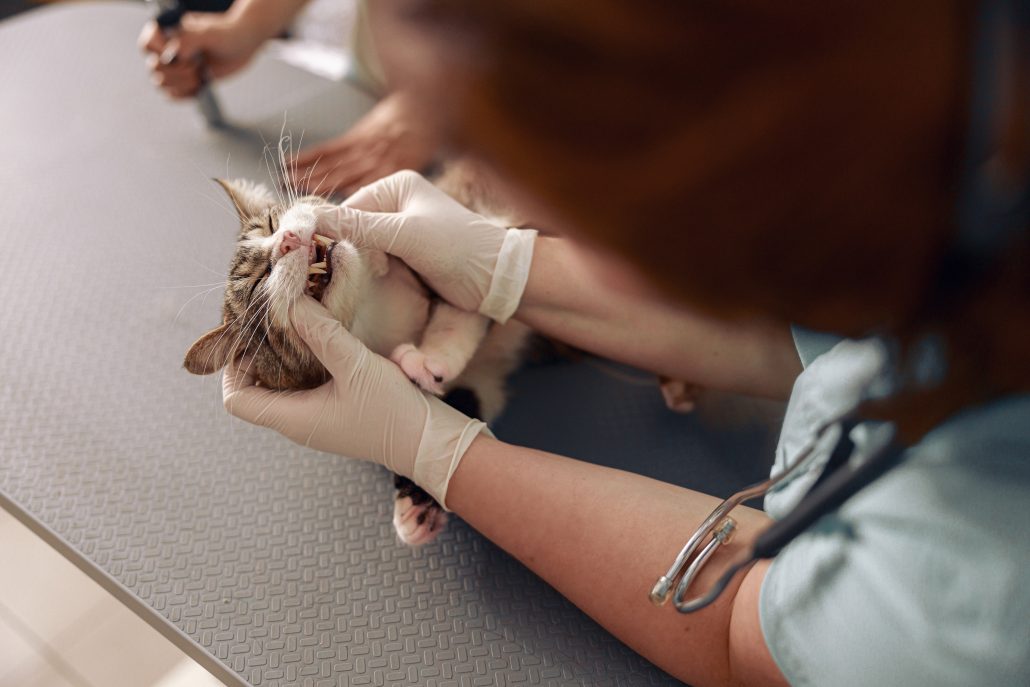
Symptoms Of Gum Disease in Pets
The symptoms of gum disease in pets can manifest in a variety of ways, making it essential to remain vigilant for any potential Some pets may not show any signs of dental issues until thorough examination is conducted, emphasising the importance of proactive dental care as a routine part of your pet’s regular veterinary checkups. On the other hand, some furry companions may exhibit distinct signs of dental pain and discomfort, which include:
- Bleeding or inflamed gums
- Discoloured teeth (brown or yellow)
- Loose or missing teeth
- Bad breath (halitosis)
- Irritability
- Weight loss
- Bloody or “ropey” saliva
- Drop in appetite
- Favouring one side of the mouth when chewing
- Excessive drooling
- Blood in water bowl or on chew toys
It is important to note that the specific signs of gum disease can vary depending on the stage of periodontal disease that your pet’s teeth have reached. By familiarising yourself with these potential symptoms and promptly seeking veterinary care, you can take proactive steps to address gum disease and preserve your pet’s oral health and overall well-being.
What Happens If Dental Disease Remain Untreated?
When gum disease is left untreated, its impact extends far beyond oral discomfort, wreaking havoc on their overall well-being. The consequences of neglected gum disease can cause a range of complications including:
Jaw Fractures:
As gum disease progresses and weakens the supporting structures of the teeth, it can increase the risk of jaw fractures, leading to chronic pain and functional limitations.
Abscess Formation:
Untreated gum disease can give rise to painful abscesses, which are pockets of infection and pus that can form in the gums or the root of the affected teeth.
Oronasal Fistulas:
Advanced gum disease can create abnormal connections (fistulas) between the oral cavity and the nasal passages, resulting in chronic infections, nasal discharge, and breathing difficulties.
Eye Issues:
The spread of infection from severe gum disease can affect the surrounding tissues, including the eyes, potentially leading to eye infections, inflammation, and related complications.
Oral Cancers:
Prolonged inflammation and damage caused by untreated gum disease increase the risk of developing oral cancers, which can further compromise your dog’s health and quality of life.
Increased Risk of Organ Damage:
The inflammation associated with gum disease can release harmful bacteria and toxins into the bloodstream, potentially affecting vital organs such as the heart, liver, and kidneys.

Treating Gum Disease
The treatment of gum disease, also known as periodontal disease, depends on the severity and extent of the condition. An individualised approach is necessary to address the specific dental needs of your pet. Typically, treatment involves a combination of the following methods:
Professional Dental Cleaning
This vital procedure is performed under general anaesthesia and includes several essential steps:
- Scaling: Thoroughly removing plaque and tartar buildup from both above and below the gum-line.
- Polishing: Smoothing the tooth surfaces to discourage future plaque accumulation.
- Full Mouth X-rays: Capturing detailed images to assess the extent of the disease and identify hidden issues.
- Probing: Evaluating each tooth by measuring the depth of pockets around them, which helps determine the stage of disease and the appropriate treatment plan.
Medication
In some cases, medication may be prescribed to combat infection, reduce inflammation, and prevent further destruction of the tooth attachments. These medications can include antibiotics, antimicrobial mouth rinses, or specific treatments tailored to your pet’s condition.
Teeth Removal
In situations where advanced gum disease has caused irreparable damage to teeth, extraction may be necessary. This approach aims to eliminate a source of significant pain and infection, ensuring your pet’s overall comfort and preventing further complications.
Cleaning at Home
Establishing a consistent oral hygiene routine is crucial in managing gum disease. Regular brushing with pet-specific toothpaste and a soft-bristle toothbrush can help remove plaque, reduce bacteria, and promote healthier gums.
Read More: The Importance Of Dental Care For Pets
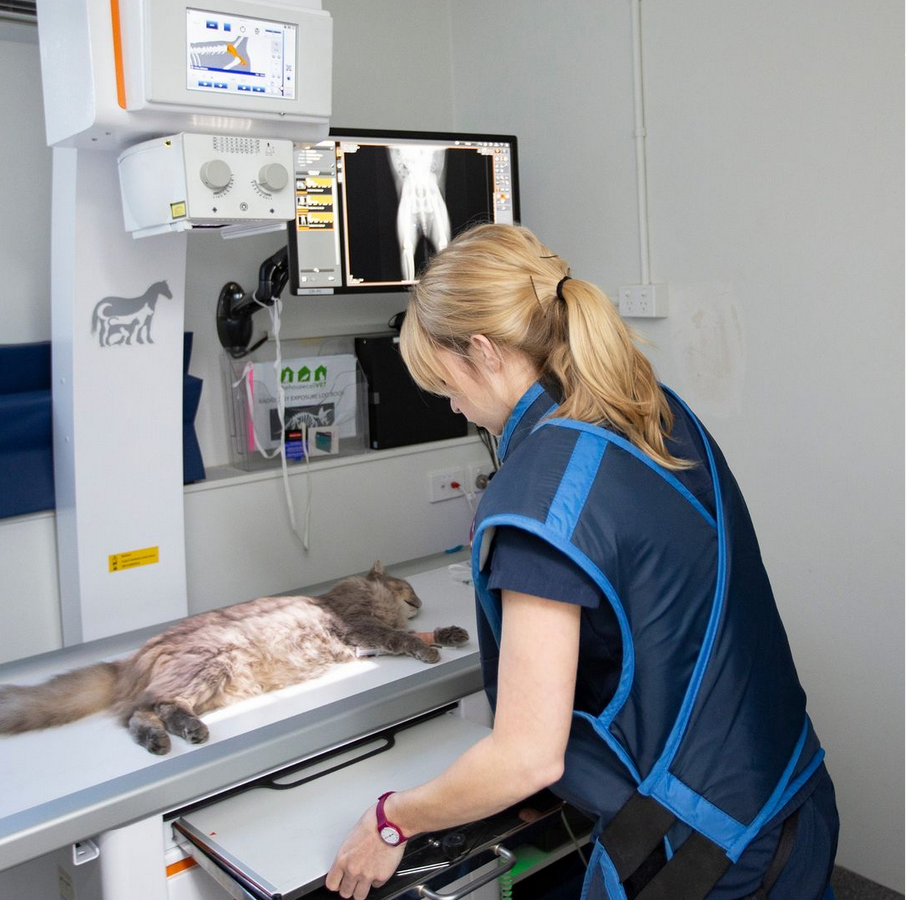
Preventing Gum & Dental Disease
Maintaining your pet’s oral health is key to preventing the onset of gum and dental disease. By implementing a proactive approach and incorporating preventive measures into your pet’s routine, you can help ensure a lifetime of healthy smiles. Here are essential strategies to prevent gum and dental disease in your furry companion:
Embrace Regular Dental Care
- Brushing: Make toothbrushing a part of your pet’s daily routine. Use a pet-specific toothbrush and toothpaste to gently clean their teeth to remove plaque and preventing tartar buildup.
- Dental Wipes and Rinses: Supplementary dental wipes or rinses can provide additional assistance in reducing bacteria and promoting oral hygiene between brushings.
- Dental Treats and Toys: Offer dental treats and toys designed to promote chewing, which can help remove plaque and stimulate gum health.
Ensure Professional Dental Cleanings & Checkups
Schedule regular professional dental cleanings and routine veterinary checkups.
These thorough cleanings help remove plaque, tartar, and hidden debris that cannot be addressed through at-home care alone and help identify any early symptoms.
Follow your veterinarian’s recommended frequency for professional cleanings, which can vary based on your pet’s specific needs.
Optimise Their Diet for Oral Health
Choose high-quality, balanced pet foods that support oral health. Look for products that are formulated to promote dental health and reduce plaque and tartar accumulation. Avoid excessive sugary treats or human foods that can contribute to dental problems.
Be Alert to Warning Signs Of Gum Disease
Stay vigilant for potential signs of gum disease, including bad breath, inflamed gums, tooth discoloration, loose teeth, or difficulty eating. If you notice any of these symptoms, seek veterinary care as soon as possible.
Read More: Secrets To A Stress-Free Vet Visit
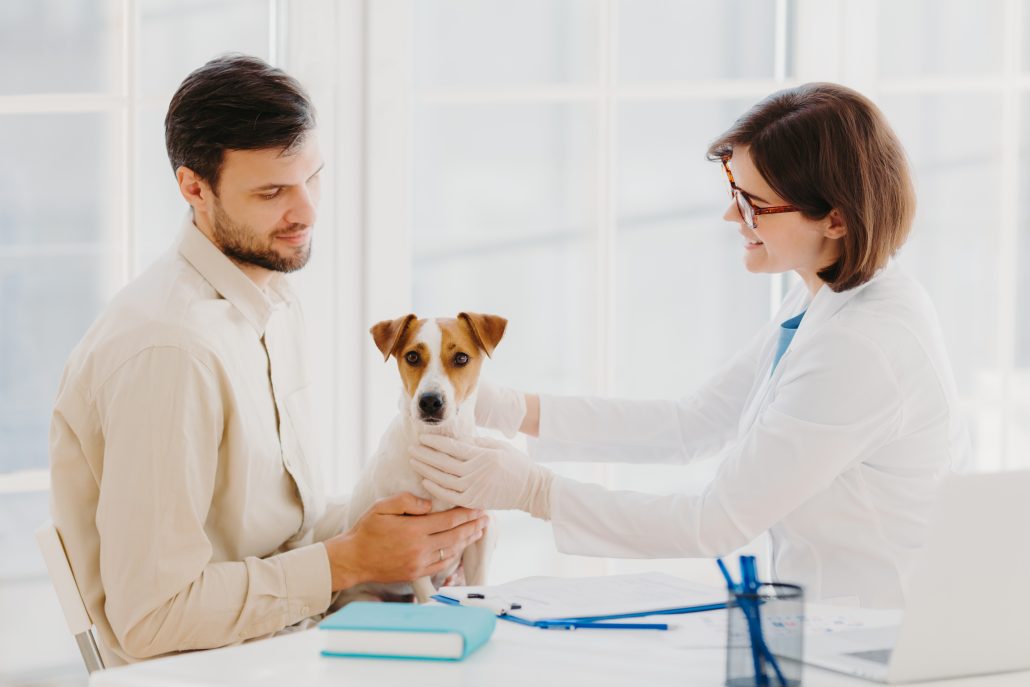
Building a Foundation for Healthy Teeth
Our furry companions rely on us to ensure their overall well-being, and oral health plays a crucial role in their quality of life. Neglected gum disease can lead to severe consequences, impacting not only their oral comfort but also their entire body.
By prioritising regular dental care, such as brushing their teeth, providing appropriate chew toys, and scheduling professional cleanings, we can significantly reduce the risk of gum disease. Additionally, being alert to the warning signs, maintaining a balanced diet, and attending routine veterinary checkups are essential elements in preventing and managing oral health issues.
Give your pet the gift of excellent oral health. Schedule a veterinary appointment today and ensure their dental well-being for years to come. Contact The House Call Vet today to book a consultation or learn more about our comprehensive dental care services!

